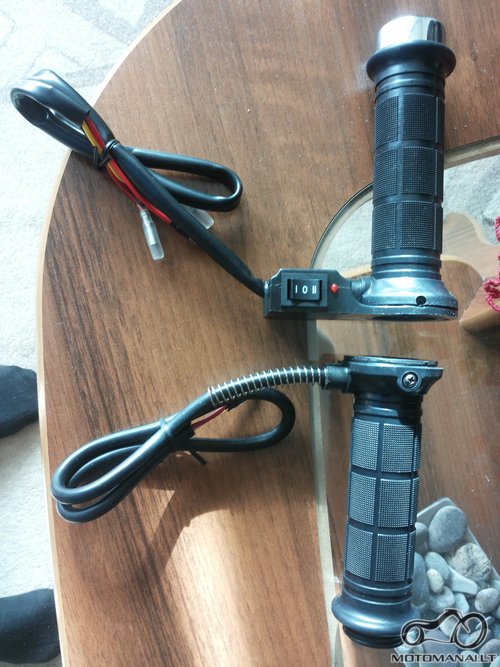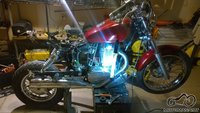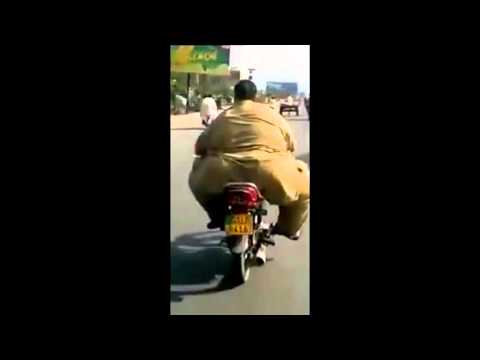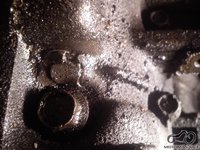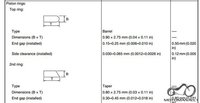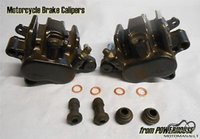Bendrosios diskusijos » Abiem ratais varomas motociklas
|
Gatvinis
500cc    |
Abiem ratais varomas motociklasseniau buvau skaites uzsienio literaturoj, o dabar perskaiciau Moto+ zurnale, apie abiem ratais varoma Dakaro lenktynems skirta motocikla. Gal turit kas info apie ta sistema, kokia ten konstrukcija ir kokiu principu varomas tas priekinis ratas?
2007 Spalio 11 22:32
|
|
Skeptikas
1500cc        |
google tau visada pades .gif) Principas ten paprastas, varoma hidraulika. Beje,
kiek zinau yra ne tik dakarui, bet ir serijinej gamyboj. Principas ten paprastas, varoma hidraulika. Beje,
kiek zinau yra ne tik dakarui, bet ir serijinej gamyboj.
2007 Spalio 12 00:04
|
|
Krapštukas
1100cc      |
Buvo ir ant sportbike isbandyta, slapioj trasoj lyg ~2min rate, -4 sekundes.
2007 Spalio 12 00:14
|
|
Kuvaldaliotas
2200cc        |
HOW THE WR450F 2-TRAC WORKS The patented 2-Trac system uses a hydraulic pump situated on top of the gearbox, and a chain running in an oil bath drives the mechanism. The system pumps hydraulic fluid via high-pressure hoses to the front wheel hub which is fitted with a hydraulic motor equipped with a single gear. When the fluid has passed through the motor it passes through a filter and returns to the pump. 2-Trac is a ‘smart’ self-regulating system. Hydraulic pressure to the front wheel increases as the rear wheel loses traction on loose surfaces, and so the amount of power being transmitted to the front wheel is constantly changing so that the best ratio is always being applied. The front wheel can never spin faster than the rear wheel, and the amount of power transmitted to the front wheel is never greater than the wheel can use for traction. This self-regulating system also ensures that the hydraulic power supply to the front wheel is reduced as soon as the rear wheel regains full traction. When the rider is coasting there is no power supplied to the front wheel – but if the throttle is opened sharply and the rear wheel starts to lose traction, the sudden increase in pump rotation speed boosts the fluid pressure within the system, and a significant proportion of the engine's power output is directed to the front wheel. If the rate of rear wheel spin continues to increase, the amount of power directed to the front wheel also increases, and so the proportion of engine power fed through to the front wheel is controlled by both the throttle position and the rear wheel's rate of spin. WHY DID YAMAHA CHOOSE A HYDRAULIC SYSTEM? Essentially there are two systems for powering the front wheel of a motorcycle – mechanical and hydraulic. On a three-dimensional vehicle such as a car, the wheel hubs can be accessed easily from the side, making it relatively easy to fit a bulky mechanical drive. However, from an engineering viewpoint, a motorcycle is effectively a two-dimensional vehicle, and supplying power to the front wheel hub is not so easy. The situation is complicated even more by the fact that a motorcycle front hub has front fork tubes on both sides, and in many cases dual disc brakes, making the front wheel hub even more difficult to access. There have been a number of other two wheel drive prototypes and specials built in recent years. These other systems typically used a mechanical transmission featuring a chain or shaft drive connected to the front wheel, but these designs had a number of major disadvantages. As well as being heavy and complicated, these mechanical systems also require high levels of routine maintenance. Another problem associated with mechanical systems is that they can only be used after complex modifications have been made to the bike’s frame and front suspension, and the end result is quite often rather unorthodox and unattractive. In contrast, hydraulic drive is relatively simple, light and compact, and for these reasons Yamaha and Öhlins believe that hydraulic front wheel drive is the most effective option. Every time a conventional one-wheel drive motorcycle spins its rear wheel on a loose surface, power is being wasted, and so in this situation the motorcycle is not transmitting its power very efficiently. By diverting up to 15% of the engine power to the front wheel, the 2-Trac system used excess power that was being wasted to spin the rear wheel, and allows the machine to achieve more traction. As an overall package, 2-Trac actually improves overall transmission efficiency by being more effective at converting horsepower into forward motion. Another advantage of the Yamaha 2-Trac hydraulic system is that it can be adapted to suit virtually any standard production motorcycle without requiring major changes to the engine or chassis. For these reasons, Yamaha believe that the hydraulic 2-Trac system represents the future for motorcycle two wheel drive. 2-TRAC – HOW DOES IT FEEL? The Yamaha WR450F 2-Trac rally bike is one of the most significant developments in the off road world for many years, and its potential impact can be compared to that made by the arrival a few years ago of the first 4WD rally cars. “Riding the WR450F 2-Trac you will be amazed by its ability to perform in such difficult conditions like deep soft sand or mud. The bike keeps going while standard bikes are digging themselves holes and getting stuck!” commented Yamaha Motor France President Jean-Claude Olivier. He continued: “As well as its greater traction on loose or wet surfaces, the 2-Trac system also ensures higher stability both in a straight line and when cornering on the dirt. You can lean into corners and the bike’s rear end follows the same line as the front wheel. Unlike a conventional dirt bike where you have to fight a sliding rear end on corners, the WR450F 2-Trac is easier to control, and this will be a major advantage for beginners as well as experts.” Tests have also revealed that the top speed of the WR450F 2-Trac is around 10% higher on a sandy track than its conventional counterpart due to the improved traction, demonstrating that this system offers its rider many performance advantages. YAMAHA 2-TRAC – THE FUTURE The new Yamaha WR450F 2-Trac rally machine will be produced in a limited series for competition use only, but the actual 2-Trac system clearly has the potential to be used in a range of motorcycle and scooter applications in the future. For different MC and SC concepts, 2-Trac has enormous potential both as a means of effectively handling the increasing power output of larger machines, yet also as an anti-spin device. Following future market research results and potential customer demand, Yamaha will further study the adaptation of 2-Trac in other products. In addition to the new WR450F 2-Trac rally version, Yamaha is currently studying the possibilities of a YZ450F 2-Trac Supermoto. Kokybiškas nuotraukas mato prisijungę Motomanai.lt nariai.
2007 Spalio 12 00:37
|
|
Narys
250cc   |
Kažkur straipsniuse mačiau dniepriokui į priekį reduktorių įmestą,tik jau nebeatmenu kaip ten tiksliai viskas daryta.Pasukamumas mažas,bet prie to lygtai kaliaskė buvo varoma,tai 3x3 nesustabdomas...
2007 Spalio 12 13:16
|
|
Auksarankis
600cc     |
apačioj Gonda su priekinio rato žvaigžde .gif) http://www.advrider.com/forums/showthread.php?s=&threadid=109....
2007 Spalio 12 16:40
Kawasaki Brute Force 750 4x4i
|
71.040.604
+22.361
+22.361
| Viso | Vakar | |
| Nariai | 24.490 | +9 |
| Temos | 4.653 | +2 |
| Žinutės | 353.849 | +256 |
| Komentarai | 100.193 | +27 |
| Gyvadėžė | 678.090 | +799 |
| Nuotraukos | 72.891 | +54 |
| Video | 3.719 | +4 |
| Motokatalogas | 4.174 | +17 |

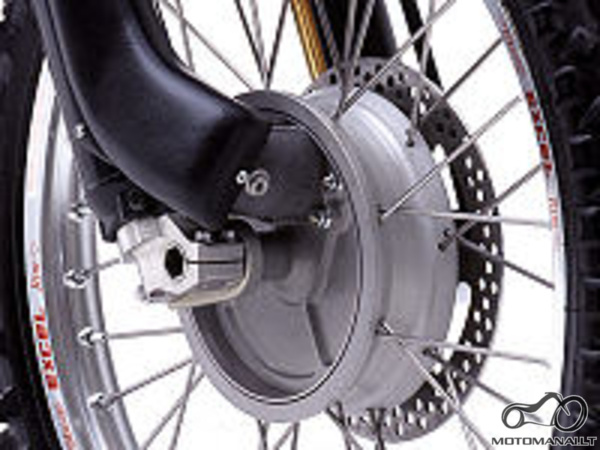


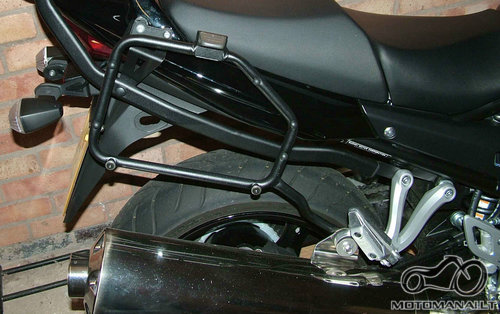
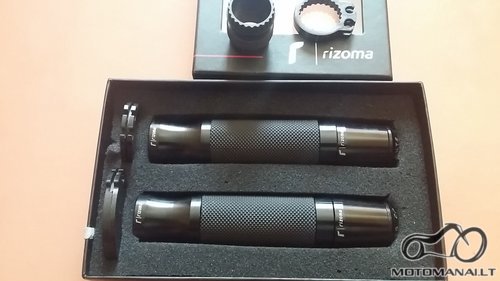

.jpg)
